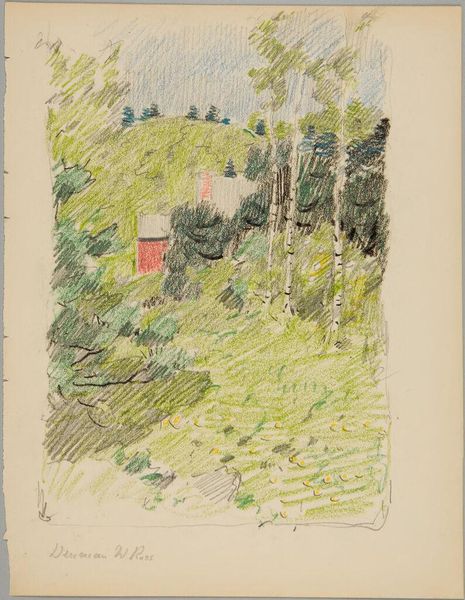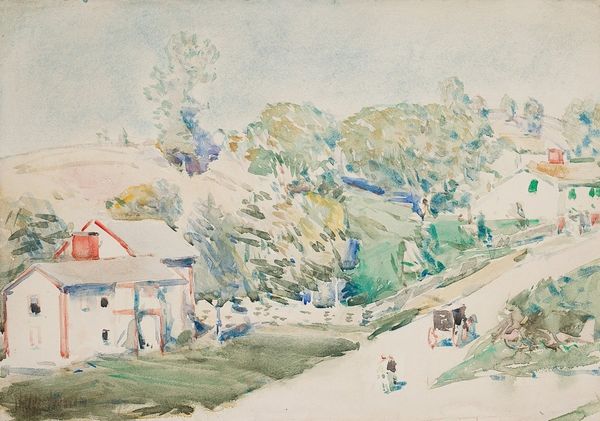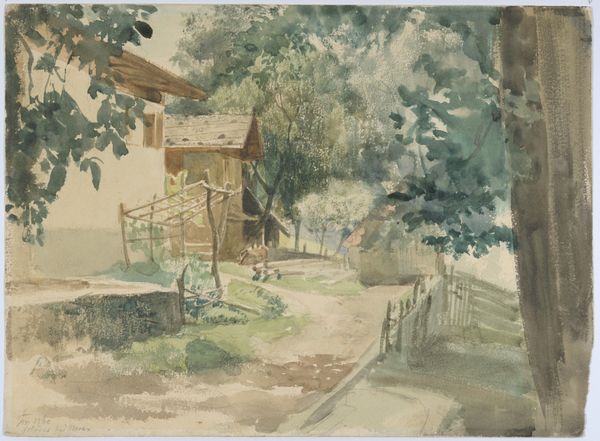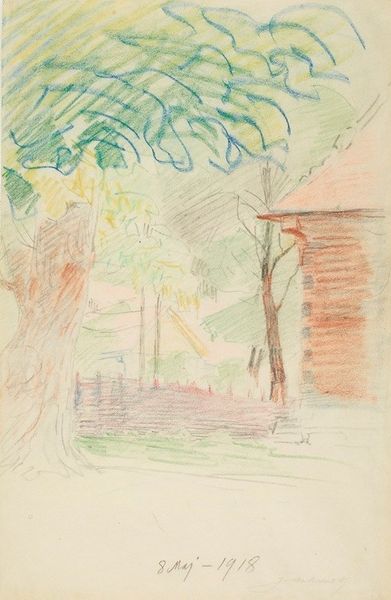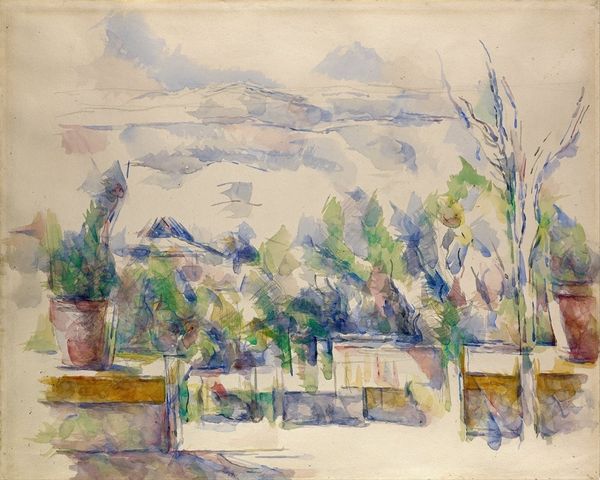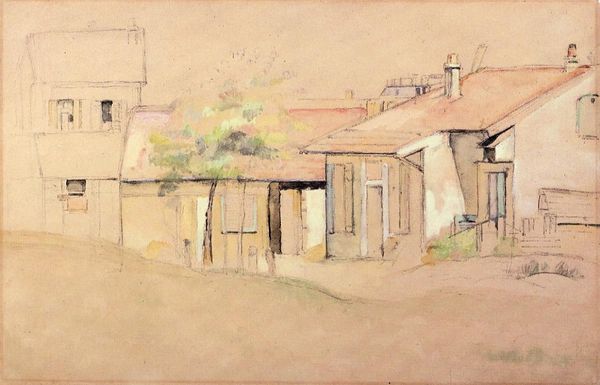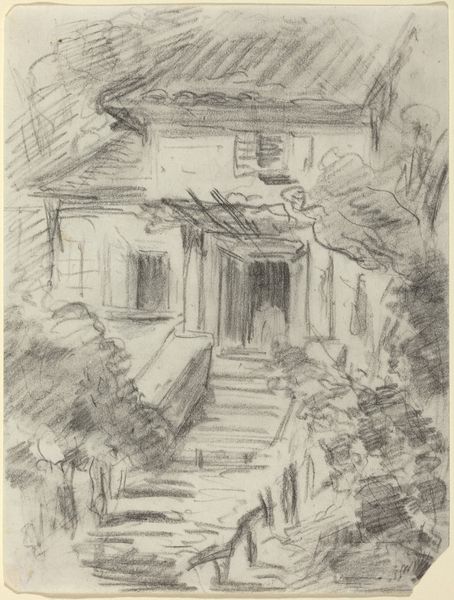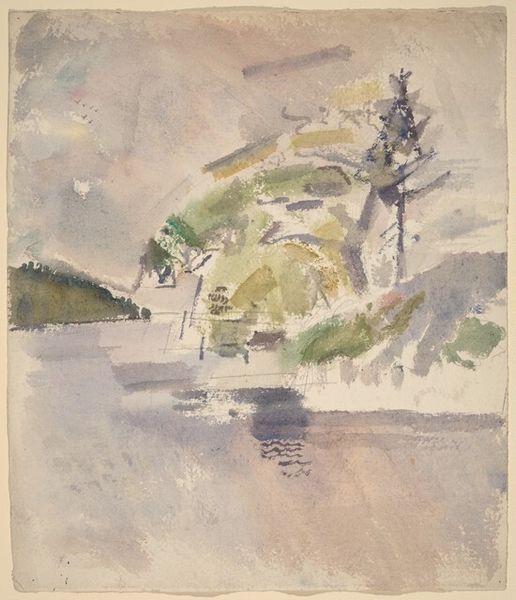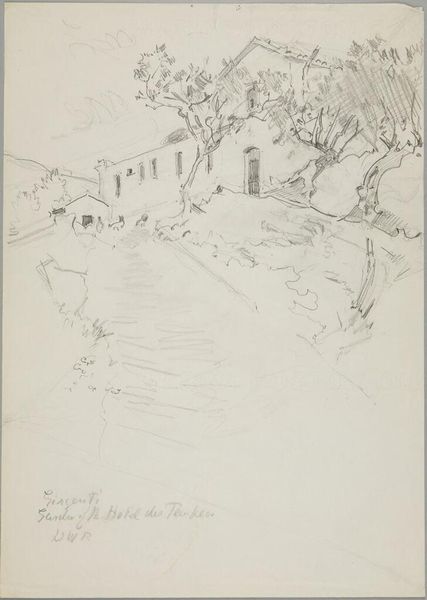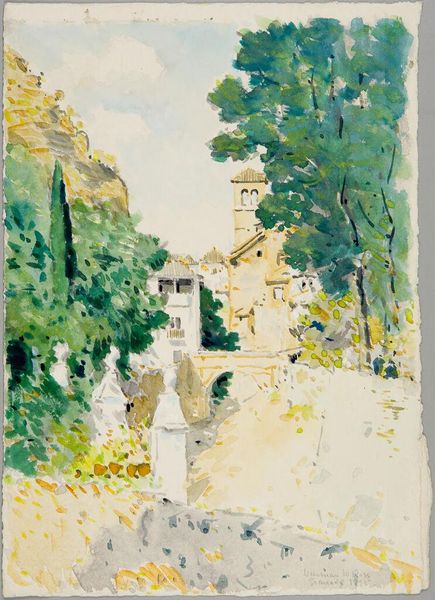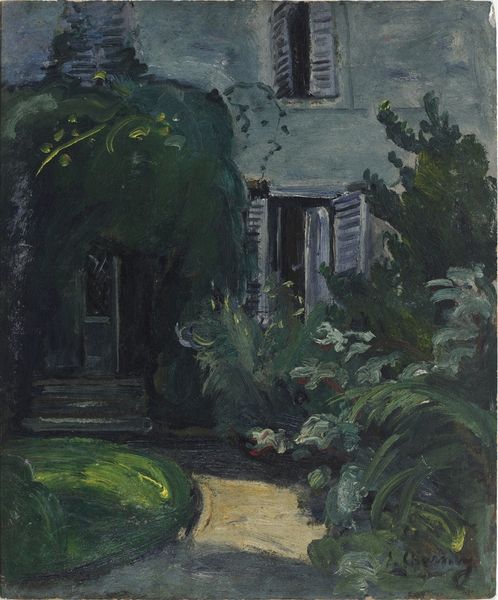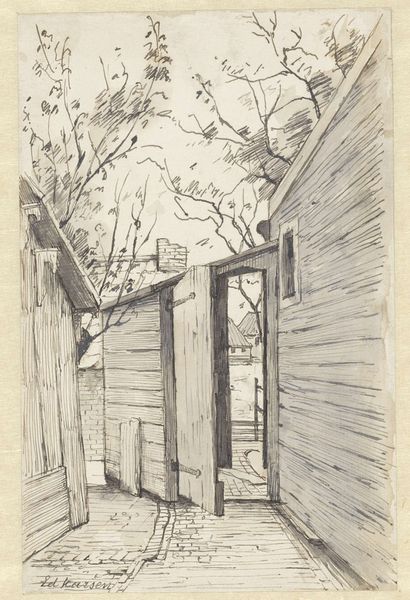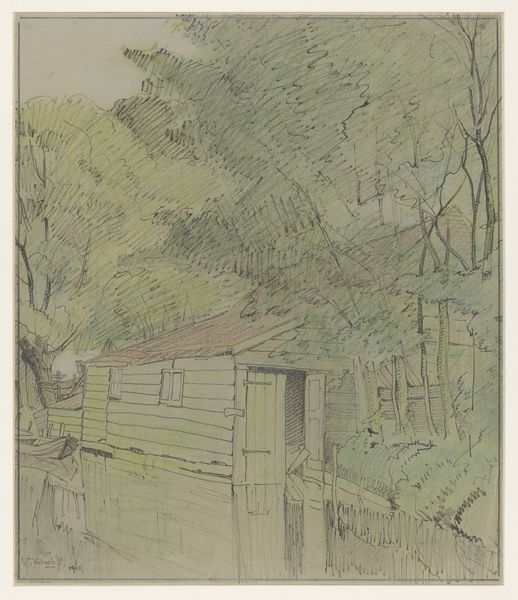
drawing, plein-air, watercolor, architecture
#
drawing
#
impressionism
#
plein-air
#
landscape
#
watercolor
#
architecture
Copyright: Public Domain: Artvee
Paul Cézanne made this watercolor, Entrance to a Garden, at the turn of the twentieth century, a period when French artists were pushing the boundaries of how and what art could represent. As we can see, Cézanne wasn't interested in representing reality with photographic accuracy. The loose brushstrokes and muted palette create a sense of atmosphere rather than precise detail. This aligns with the broader impressionist movement, which sought to capture subjective experience over objective likeness. But it also marks a shift toward abstraction that would soon dominate the Parisian art world. Cézanne’s choice of subject matter is also important. Gardens at this time were sites of leisure and status, reflecting the values of the bourgeoisie. Unlike his contemporaries, Cézanne’s interest lay less in depicting the people and more in capturing the spaces they inhabited. To understand Cézanne fully, we need to look at exhibition reviews and the letters from his contemporaries. These help us understand the critical conversation around his work and the social context that shaped his artistic vision.
Comments
No comments
Be the first to comment and join the conversation on the ultimate creative platform.
